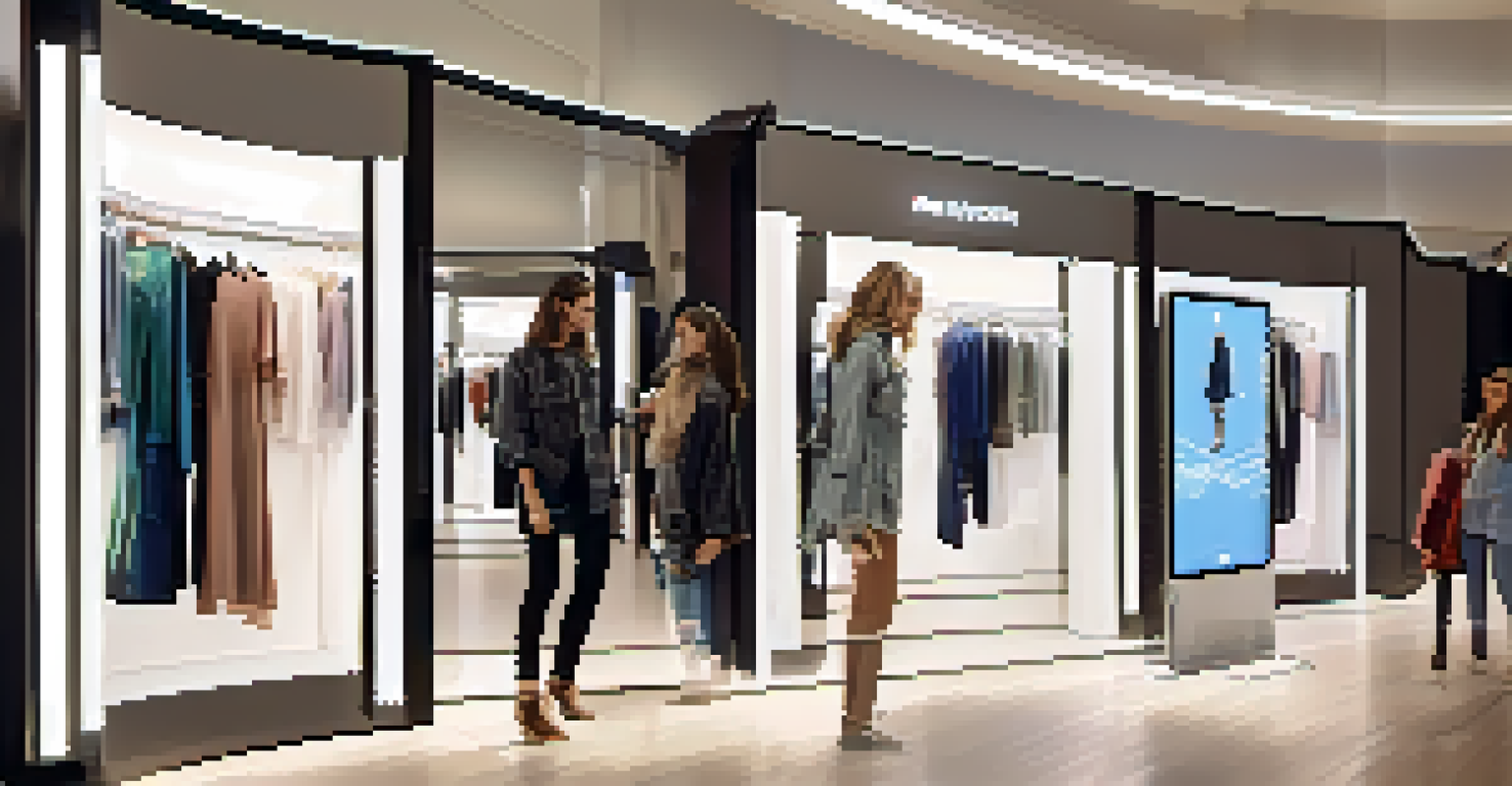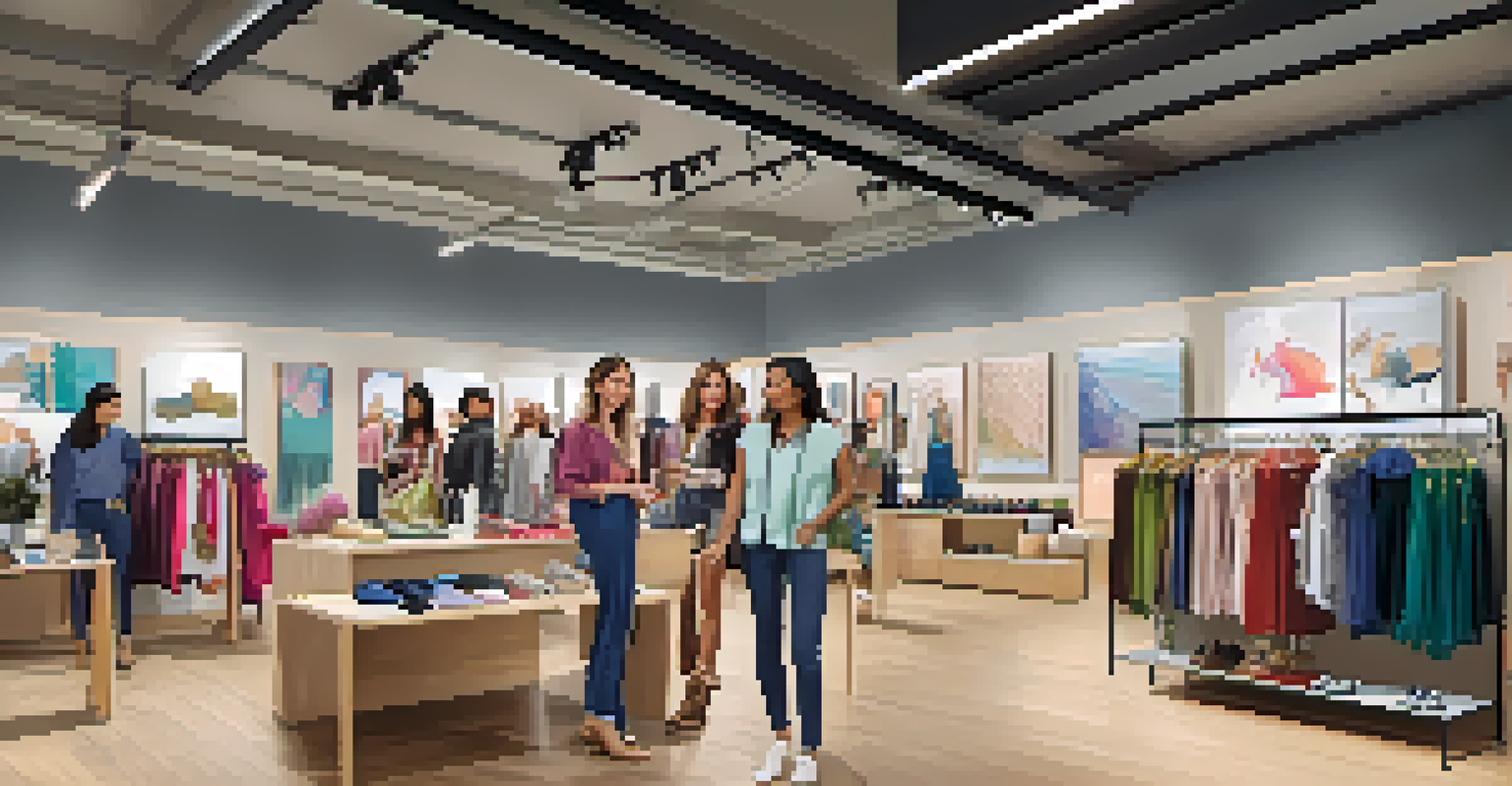The Future of Fashion Retail: Trends to Watch in 2024

Sustainable Fashion: The Rise of Eco-Friendly Brands
As consumers become more environmentally conscious, sustainable fashion is taking center stage. Brands are now prioritizing eco-friendly materials and ethical production methods to appeal to a growing demographic that values sustainability. For instance, companies are using organic cotton and recycled fabrics, reducing their carbon footprint and promoting a circular economy.
Fashion is the armor to survive the reality of everyday life.
In 2024, we can expect to see an increase in transparency from fashion retailers regarding their supply chains. Shoppers want to know where their clothes come from and how they're made, pushing brands to share more information about their sourcing and manufacturing processes. This newfound transparency will likely foster trust and loyalty among consumers.
Additionally, the resale and rental markets are expected to flourish as part of this sustainable shift. Platforms like Poshmark and Rent the Runway are becoming mainstream options for those looking to shop responsibly while still enjoying the latest trends.
Tech Innovations: Smart Shopping Experiences Ahead
Technology is revolutionizing the fashion retail landscape, and 2024 will be no exception. From augmented reality (AR) fitting rooms to AI-driven personal shopping assistants, tech innovations are enhancing the way we shop. Imagine being able to virtually try on clothes from the comfort of your home; that’s the future we’re heading towards.

Retailers are increasingly investing in mobile apps that provide personalized recommendations based on users' preferences and shopping history. This level of personalization not only improves the customer experience but also increases conversion rates, as shoppers are more likely to purchase items tailored to their tastes.
Sustainable Fashion Gains Momentum
As consumers prioritize eco-friendliness, brands are adopting sustainable materials and ethical practices to meet the growing demand.
Moreover, utilizing data analytics to understand consumer behavior will become crucial for brands. By effectively analyzing shopping patterns, retailers can optimize their inventory and marketing strategies, ensuring they meet customer demands more efficiently.
Omni-Channel Shopping: Seamless Integration of Online and Offline
In 2024, the boundary between online and offline shopping will continue to blur. Consumers expect a seamless experience whether they are browsing a website or visiting a physical store. Retailers are adopting an omni-channel approach, where customers can easily transition between platforms without losing their shopping context.
Sustainability is not a trend; it is a responsibility.
This means more retailers are implementing 'click and collect' services, allowing shoppers to order online and pick up their purchases in-store. This not only saves time but also gives consumers the chance to browse additional items while they’re at the store, increasing impulse buys.
Additionally, integrating social media into the shopping experience will enhance connectivity. Platforms like Instagram and TikTok are already paving the way for social commerce, where users can shop directly through posts and videos, making shopping more engaging and interactive.
Personalization: Tailoring the Shopping Experience
As the competition in fashion retail heats up, personalization is emerging as a key differentiator. In 2024, we can expect retailers to leverage advanced algorithms and customer data to create tailored shopping experiences. This includes personalized product recommendations, targeted promotions, and customized content that resonates with individual shoppers.
For example, online retailers might analyze past purchases and browsing behavior to suggest items that align with a customer's style. This level of personalization not only enhances the shopping experience but also encourages customer loyalty, as shoppers feel understood and valued.
Tech Innovations Transform Shopping
Advancements like AR fitting rooms and AI shopping assistants are enhancing customer experiences and personalizing retail interactions.
Moreover, brands will likely offer more customizable products, allowing consumers to express their unique style. From personalized denim to bespoke accessories, this trend caters to the desire for individuality in fashion.
Diversity and Inclusivity: Broadening Fashion Narratives
Diversity and inclusivity are more than just buzzwords in the fashion industry; they are essential values that consumers demand. In 2024, fashion retailers will increasingly embrace diversity in their marketing campaigns, product offerings, and brand narratives. This means showcasing a broader range of body types, ethnicities, and gender identities.
Consumers are now more likely to support brands that reflect their values and represent their communities. By celebrating diversity, retailers can create a sense of belonging that resonates with a wider audience, ultimately driving sales and brand loyalty.
Furthermore, inclusive sizing will remain a focus, with more brands expanding their size ranges to cater to all body types. This shift not only meets consumer demand but also encourages a more positive body image within society.
Digital Fashion: The Future of Virtual Wardrobes
Digital fashion is an emerging trend that is set to gain momentum in 2024. As virtual environments like the metaverse become more popular, consumers are exploring the concept of owning digital clothing. These virtual garments, designed for avatars in digital spaces, allow for personal expression without the environmental impact associated with traditional fashion.
Brands are beginning to experiment with digital collections, offering consumers the chance to purchase virtual outfits for their online personas. This trend not only caters to the gaming and social media communities but also opens up new revenue streams for fashion retailers.
Inclusivity Shapes Fashion Choices
Diversity and inclusivity in marketing and sizing are becoming essential for brands to resonate with consumers and foster loyalty.
Moreover, as augmented reality technology continues to advance, we may see virtual fashion shows and digital pop-up shops, providing immersive experiences that blend the physical and digital realms.
Experiential Retail: Creating Memorable Customer Journeys
In an age where online shopping is prevalent, creating an unforgettable in-store experience is more important than ever. Retailers will focus on experiential retail in 2024, designing stores that are not just places to shop but destinations to explore. Think interactive displays, workshops, and events that engage customers and foster community.
For instance, some brands may host styling sessions where customers can learn how to put together outfits or offer exclusive behind-the-scenes looks at how their products are made. These experiences create memorable connections between the brand and the consumer, encouraging repeat visits.

Additionally, integrating technology into these experiences—like virtual reality tours of the brand's origins—can further enhance customer engagement. The goal is to provide a shopping journey that leaves a lasting impression long after the purchase is made.